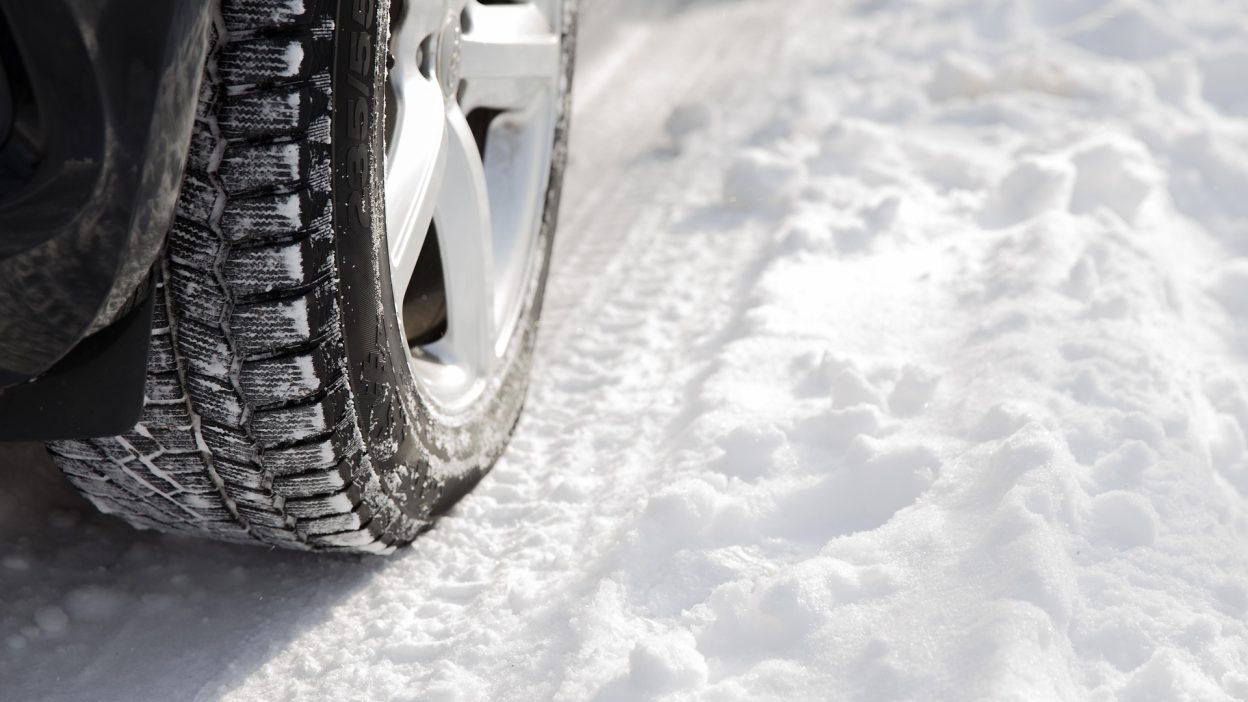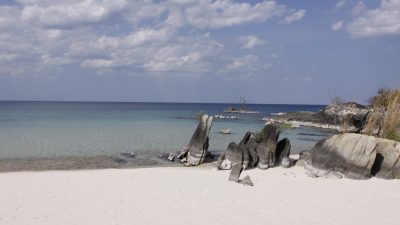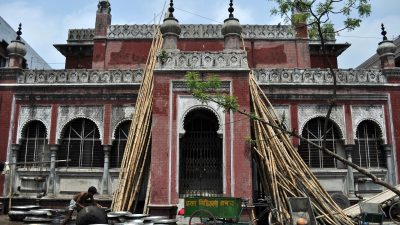The Tragic Storm That Killed Hundreds And Exposed America’s Fatal Lack Of Preparedness
On January 12, 1888, a powerful and unexpected storm, known as the Schoolhouse Blizzard, devastated the United States’ Midwest. Despite the high death toll and widespread destruction, this storm is not as widely remembered as other natural disasters. The storm’s rapid onset, extremely low temperatures, and heavy snowfall overwhelmed communities and left them unprepared. For many, the devastating consequences of the blizzard seemed to come out of nowhere, and it was far too late before people realised the severity of the situation.
This calamity was catastrophic, particularly for rural areas. Many children who were on their way home from school found themselves trapped by the storm, unable to reach safety. The lives lost during this event serve as a stark reminder of the dangers of severe weather when people are ill-prepared. The storm would eventually lead to significant changes in the way weather forecasting and disaster preparedness were handled in the U.S. – changes that have shaped the way we approach extreme weather events today.
Did the Authorities Fail? How Prepared Was America for the Schoolhouse Blizzard?
In the late 19th century, the U.S. was far less equipped to handle natural disasters. The Schoolhouse Blizzard is an example of how ill-prepared the nation was when it came to dealing with extreme weather events. The country lacked effective weather forecasting systems, and official warning protocols were nearly nonexistent. As a result, many communities had no idea the storm was approaching.
When the blizzard hit, it swept through the region without any prior warning, and local authorities were powerless to help. Communication systems were rudimentary at best, and there was no national weather service capable of giving out alerts to warn people of the impending storm. Rural communities were the hardest hit, as they often lacked the resources or infrastructure to survive such an event. Schools were left unprepared, and many children died simply because they were not aware of the danger. Had the authorities been better equipped with forecasting tools and communication systems, many lives might have been saved.
The lack of preparedness and slow response to the disaster highlight a critical failure in the country’s ability to deal with extreme weather. What’s even more tragic is that this storm could have been predicted to some extent, but there were no systems in place to provide such warnings.
The Tragic Toll of the Schoolhouse Blizzard: Deaths, Injuries & Devastation
- How Many Lives Were Lost? The blizzard’s toll was devastating, with over 235 people losing their lives, most of whom were children. The vast majority of these deaths occurred as children were making their way home from school. Schools, which were designed to protect children from such weather events, instead became their tombs. With no proper warning and no chance to seek shelter, many children froze to death in conditions so brutal that their bodies were often never recovered. The loss of life was especially heavy in rural communities, where transportation and infrastructure were inadequate to respond to such a sudden catastrophe.
- The Impact on Families and Communities
The death of young children left families devastated, and the community was left to pick up the pieces. The tragedy hit especially hard in smaller towns and isolated areas, where many children would walk long distances to get home after school. The emotional toll on families and the communities as a whole was profound. The impact on the survivors was long-lasting, as many families never recovered from the shock of losing loved ones to such an unforeseen disaster.
- The Impact on Families and Communities
- The Harsh Conditions: Freezing Temperatures and Blinding Snow The blizzard itself was ferocious. It brought freezing temperatures well below -20°F (-28°C) and hurricane-force winds that sent blinding snow in all directions. The snowstorms reduced visibility to nearly zero, and many of the victims were unable to find shelter before succumbing to the cold. In addition to the direct death toll, many others were left seriously injured by the harsh conditions, with frostbite being a common affliction among those who survived.
- Long-Term Effects on Survivors
The mental and physical toll on the survivors was equally devastating. The tragedy led to numerous health problems, including long-term psychological trauma. Many survivors spent the rest of their lives haunted by the events of that day, and some families were left without any resources to rebuild their lives.
- Long-Term Effects on Survivors
The Blizzard’s Aftermath: How America’s Communities Rebuilt After the Disaster
In the immediate aftermath of the Schoolhouse Blizzard, recovery efforts were slow and difficult. Communities were left to deal with the damage on their own, as no coordinated national response was available at the time. The infrastructure in many affected areas was severely damaged, with many homes destroyed by the heavy snow and winds. It took several months for communities to fully recover, and during that time, the government’s lack of support was glaring.
Local residents, with the help of neighbours, began the task of rebuilding homes and schools. However, the recovery process was not easy. Resources were scarce, and most rural areas lacked the means to repair the damage that had been caused. Many of the affected areas were cut off from the rest of the country due to blocked roads and snowdrifts that reached up to 15 feet (4.5 meters) high in some places.
In the years following the storm, there were significant changes in how emergency response and disaster recovery were handled. A new awareness emerged regarding the importance of national preparedness, and this disaster eventually led to improvements in how the U.S. responded to natural catastrophes. The event sparked national dialogue on the need for better weather forecasting systems, and it paved the way for the creation of the National Weather Service in the late 19th century.
Was It Nature’s Fury or Human Error? Examining What Went Wrong During the Schoolhouse Blizzard
The Schoolhouse Blizzard was undeniably a natural disaster of immense power, but there were significant human errors that contributed to the tragedy. The lack of adequate communication systems, the absence of timely warnings, and the slow governmental response exacerbated the storm’s devastating impact.
- Inadequate Weather Forecasting and Warning Systems
In the late 19th century, weather forecasting was in its infancy. The storm was not predicted in advance, and because there were no official warnings, people were caught completely off guard. Had meteorologists been able to issue warnings in advance, many lives could have been spared. However, the technology of the time simply wasn’t up to the task, and many people perished because they were unaware of the danger. - Slow Response Times: A Delayed Rescue Effort
After the storm had struck, the response was sluggish. Many affected areas were isolated by the snow, which severely delayed rescue efforts. Without the ability to communicate efficiently or send rescue teams in time, the survival rate was drastically reduced. The lack of infrastructure and the inability to quickly mobilize resources left communities stranded, unable to recover swiftly. - Missed Opportunities for Prevention
There were clear opportunities to reduce the loss of life during the storm, such as closing schools earlier or providing information on extreme weather. However, the absence of public awareness campaigns and weather systems meant that many communities remained ignorant of the impending danger. A proactive approach could have saved lives, but instead, people were left vulnerable and unaware.
The Schoolhouse Blizzard: A Wake-Up Call for Disaster Preparedness
The aftermath of the Schoolhouse Blizzard led to substantial changes in disaster preparedness across the United States. The blizzard served as a wake-up call for the country, signalling the need for better weather forecasting and more robust disaster response plans. The nation began to realise that natural disasters required more than just local responses – national coordination and early warning systems became essential to saving lives.
The federal government began to invest in more advanced meteorological technologies and communication systems. This marked the beginning of a series of reforms that would eventually lead to the establishment of the National Weather Service. The lessons learned from the storm contributed to better responses to future disasters, and the Schoolhouse Blizzard is often cited as the turning point in the U.S. disaster response policy.
- New Technology and Forecasting Tools
In the years following the event, technological advancements in meteorology, including the development of telegraph systems, allowed for faster communication of weather warnings to the public. This paved the way for more accurate forecasting methods, which saved lives during future storms. The Schoolhouse Blizzard directly influenced the development of more modern weather prediction systems, which today help protect millions of people from extreme weather.
The Untold Stories: Survivors of the Schoolhouse Blizzard Share Their Nightmares
The survivors of the Schoolhouse Blizzard still carry the memories of that harrowing day. Many recount their experiences of braving the blinding snow, struggling to find shelter, and seeing others fall victim to the storm. These personal stories are not only testimonies of survival but also serve as a reminder of the sheer unpredictability of nature.
- Heart-Wrenching Accounts of Those Who Lived Through the Blizzard
Survivors share their memories of watching friends and family members fall to the elements. Many were forced to make life-or-death decisions in the face of overwhelming adversity, and some never saw their loved ones again. Their stories are filled with bravery, sacrifice, and regret, painting a vivid picture of the conditions they faced. - How It Changed Their Lives Forever
The loss of loved ones and the trauma of survival marked the survivors for life. Some survivors would later become advocates for better weather forecasting and disaster management, using their stories to educate others on the importance of preparedness.
Who Is to Blame for the Schoolhouse Blizzard’s Devastation?
There has been much debate about who is to blame for the devastating toll of the Schoolhouse Blizzard. While the storm itself was a natural event, the absence of an effective warning system, slow responses, and lack of preparedness contributed to the massive loss of life. Many argue that government agencies failed to act swiftly enough to prevent the disaster from claiming so many lives.
- Government Inaction and Missed Opportunities
There was an undeniable lack of action at multiple levels of government. Federal and local authorities failed to prepare communities for the storm, and their slow response only made the situation worse. This lack of action was a significant factor in the high death toll, and the tragedy could have been avoided if the authorities
had acted earlier.
Conclusion: A Tragic Chapter in America’s History
The Schoolhouse Blizzard serves as a solemn reminder of the power of nature and the importance of preparedness. It highlighted the need for better forecasting, early warning systems, and stronger disaster response networks. While the storm was a tragedy that claimed too many lives, it also catalysed change in how America approaches natural disasters. The lessons learned from that day shaped the country’s weather systems and preparedness strategies, and they continue to protect lives today.
FAQs
- What caused the Schoolhouse Blizzard?
The Schoolhouse Blizzard was caused by a rapid drop in temperatures and a powerful snowstorm that struck the U.S. Midwest on January 12, 1888. - How many people died in the Schoolhouse Blizzard?
The blizzard resulted in the deaths of over 235 people, most of whom were children who got trapped on their way home from school. - Why was the storm so deadly?
The storm was deadly because it struck suddenly, leaving no time for warning. Its extreme cold temperatures and low visibility contributed to many deaths. - Did the government respond to the disaster?
At the time, there was no coordinated federal response to natural disasters. Communication and forecasting systems were very limited.
What was the legacy of the Schoolhouse Blizzard?
The storm led to reforms in weather forecasting, including the creation of the National Weather Service and improved emergency preparedness across the U.S.




